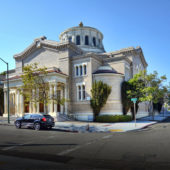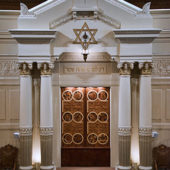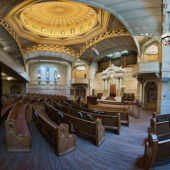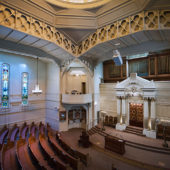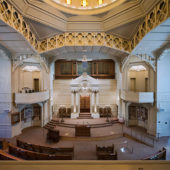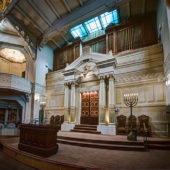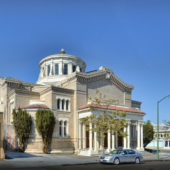Oakland’s first Jewish community with roots in the California Gold Rush of the 1850s.
Jews settled in Oakland during the Gold Rush of the 1850s. They were primarily immigrants from Germany, Hungary and Poland. By 1875 eighteen businessmen formed the First Hebrew Congregation of Oakland. Two years later the congregation built its first home, large enough to hold 500 people. The services were along Orthodox line yet there were some reform elements. By 1881 the congregation hired its first rabbi, Meyer Solomon Levy, who stayed for a decade before moving to San Francisco.
Some notable figures were associated with Temple Sinai. Among them are Rabbi Judah Magnes who had an illustrious career in New York and Israel. Gertrude Stein grew up in the congregation and attended its Sabbath School. Rae Frank, the first woman to preach from a synagogue pulpit, was teacher in the religious school in the 1880s.
In 1885 the first synagogue was destroyed by fire and a new one built nearby. Oakland prospered from the 1880s until World War I and the Jewish population grew commensurately. Some were community leaders such as the Kahn brothers and Abraham Jonas who led the commercial growth in the city’s downtown. Following the growing Jewish community’s settlement patterns, in 1910 the congregation leaders decided to move once again. In September of 1914 the synagogue’s new home, its current building, was dedicated.
The Ladies’ Auxiliary contributed a large sum towards the new synagogue which allowed the temple to purchase a new organ with more than 900 pipes. In 2006 Temple Sinai embarked on an ambitious modernization and expansion program. Over $12 million was raised to renovate the existing building and build new additions. The membership has grown to nearly 1000 member families attesting to Temple Sinai’s importance in the community and lives of its members.

